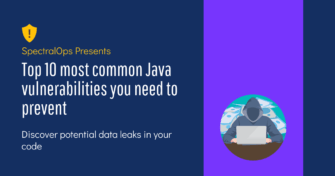Top 12 Open Source Code Security Tools
Open source software is everywhere. From your server to your fitness band. And it’s only becoming more common as over 90% of developers acknowledge using open
Subdomain takeovers don’t happen because attackers are geniuses. They happen because DNS records get messy. It’s not exactly an exciting gig to track old services or clean up unused subdomains, but ignoring it creates a security hole you can’t afford.
Microsoft discovered over 670 vulnerable subdomains in a single audit. On a larger scale, 21% of DNS records out there lead to unresolved content, and 63% of those throw ‘404 not found’ errors. To exploit this, attackers just need you to forget.
This guide cuts straight to the point: what subdomain takeovers are, why they happen, and the steps you can take to stop them. No fluff, just practical advice you can act on right away.
Preventing subdomain takeovers requires understanding the technical nuances behind them. These attacks typically arise from dangling DNS records, service mismanagement, or gaps in decommissioning workflows. By examining the ‘what,’ ‘when,’ and ‘where,’ you can identify the exact circumstances that lead to vulnerabilities and how attackers exploit them.
Here’s the breakdown.
A subdomain takeover occurs when an attacker gains control of a subdomain due to misconfigured or neglected DNS entries. Forgotten subdomains can become entry points for attackers.
Subdomains are vulnerable when DNS entries point to decommissioned services or expired resources. For example, if your team retires a project hosted on Amazon S3 but the DNS record still points to a non-existent bucket, attackers can claim and exploit the bucket name (you don’t want that).
Environments using multiple cloud services and third-party integrations are at higher risk. Complex configurations can lead to overlooked domains, creating opportunities for unauthorized access.
Attackers target dangling DNS records, which are entries pointing to non-existent services. They use DNS scanning tools to find these vulnerabilities and can quickly register the expired service or set up a server to intercept traffic.
Detecting vulnerabilities is all about staying alert. Regular DNS audits are a good start, but using automated tools and platforms like SpectralOps can make the process more manageable. Continuous monitoring systems are essential—they’ll alert you to any suspicious DNS changes as they happen.
Knowing the risks associated with subdomain takeovers is the first step; the real work begins when implementing countermeasures. Let’s review 12 practical strategies for protecting your infrastructure.
You don’t want a situation where your developer team spins up a temporary subdomain for testing and then forgets about it after the project ends. Regular DNS audits can prevent such oversights.
Here’s what you can do:
When decommissioning an application, it’s easy to overlook the associated subdomain, mainly when focused on future projects. To prevent exploitation (e.g., unauthorized claims by attackers, phishing schemes, or hosting malicious content), develop a clear protocol to evaluate each subdomain’s necessity and promptly remove unnecessary items to mitigate risks.
Real-time monitoring of DNS changes, including updates to IP addresses, CNAME records, and MX records, is crucial to prevent unauthorized access and disruptions. You don’t want unnoticed DNS changes to expose vulnerabilities. Here’s how to stay secure:
Your team might set up a wildcard DNS record for convenience, but this can expose your domain to risks over time. Wildcard records route all subdomain queries to one IP, creating a broad entry for unauthorized access.
To prevent this:
You’re integrating a new service with your subdomain, and the provider asks you to verify domain ownership.
Here’s how this verification prevents unauthorized claims:
Preparing to launch a major update to your infrastructure means addressing any hidden vulnerabilities. External vulnerability scans help identify dangling DNS records or misconfigurations.
Tools like Spectral analyze your network to find inactive DNS records and configuration errors. These scans provide a critical external perspective, revealing weaknesses that might be overlooked internally and highlighting areas that need attention.
As you expand your tech stack with new third-party services, it’s easy to lose track of the subdomains associated with them. Use identity and access management tools to monitor all subdomains and third-party services, keeping your digital inventory complete and current. Implementing robust attack surface management solutions can further enhance your ability to identify and mitigate potential vulnerabilities. Adopting a Minimum Viable Security (MVS) approach can streamline this process, ensuring that security measures are implemented efficiently without overburdening development teams. This practice maintains a clear picture of your assets.
Schedule regular updates and conduct periodic reviews, especially when adding new services or retiring old ones. Organizing your inventory reduces risks and ensures that every subdomain is monitored.
Your team is deploying multiple updates across various projects, and manually tracking DNS changes becomes overwhelming. Automation can make this process more manageable. Utilizing top security automation tools can streamline subdomain management and reduce the risk of human error.
Here’s how:
Have you noticed some team members aren’t current on subdomain threats during a security audit? Regular training can fix this. Keep your team informed about current threats and best practices. Focus on identifying vulnerabilities, incident response, and preventive measures.
Create an ongoing learning environment to boost your team’s confidence in protecting digital assets. This strategy reduces errors and ensures your team is well-prepared to face new threats.
After a significant infrastructure update, you might worry about unnoticed security gaps. Engaging professional testers to simulate real-world attacks on your subdomains is a good idea. This process helps identify weaknesses that regular audits might miss.
Conduct these tests regularly, especially after significant changes, to proactively detect vulnerabilities. This approach helps keep your defenses reliable and your subdomains safe from new threats.
When multiple team members have broad access to DNS settings, the risk of unauthorized changes increases. To address this concern, apply the principle of least privilege:
Your team is wrapping up a project that involves several temporary subdomains. Without a clear plan, these subdomains might linger, posing security risks. To prevent this, establish a step-by-step decommissioning process:
Preventing Security Risks from Temporary Subdomains
It’s time you take decisive action to protect your subdomains—don’t wait until it’s too late. You might be wondering, “Where can I start?” We’ve shared 12 actionable ways to get you going. There are plenty of tools available online to make the process even easier. SpectralOps is one of them, and you can easily integrate it into your systems. You don’t need a PhD in cybersecurity to get started; it’s so straightforward that if you’re quick, you might be up and running in just three minutes. See precisely how SpectralOps can fit into your security strategy by taking a closer look and starting with a free account today.

Open source software is everywhere. From your server to your fitness band. And it’s only becoming more common as over 90% of developers acknowledge using open

It’s easy to think that our code is secure. Vulnerabilities or potential exploits are often the things we think about last. Most of the time, our

Experiencing a data breach is never pleasant. Just ask any of the hundreds of businesses that suffered a data breach in the past year, exposing billions